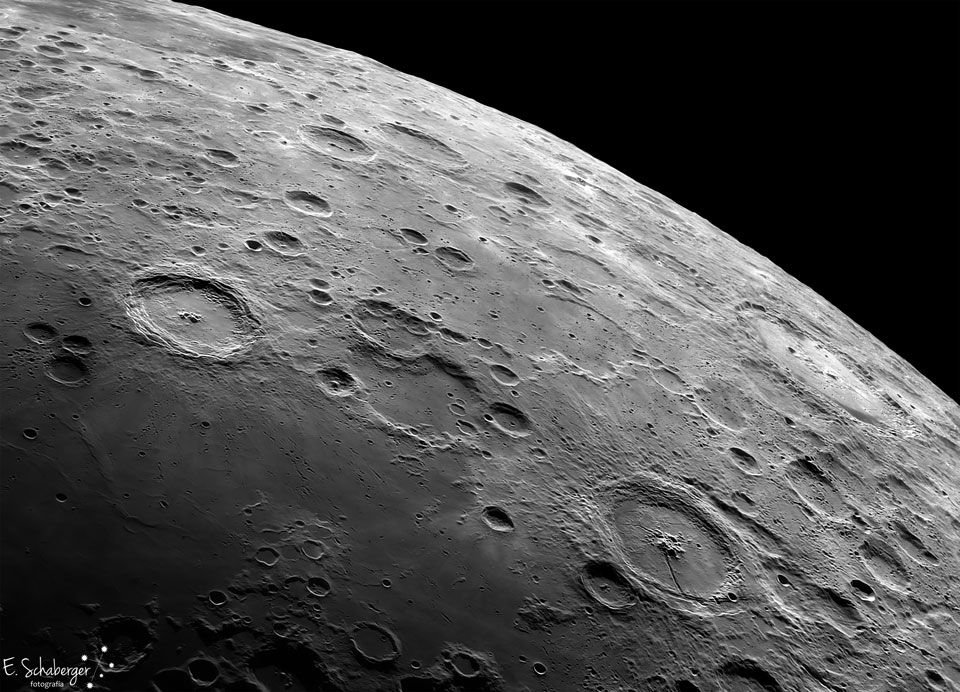2019 November 11
Lunar Craters Langrenus and Petavius
Image Credit & Copyright: Eduardo Schaberger Poupeau
Explanation: The history of the Moon is partly written in its craters. Pictured here is a lunar panorama taken from Earth featuring the large craters Langrenus, toward the left, and Petavius, toward the right. The craters formed in separate impacts. Langrenus spans about 130 km, has a terraced rim, and sports a central peak rising about 3 km. Petavius is slightly larger with a 180 km diameter and has a distinctive fracture that runs out from its center. Although it is known that Petravius crater is about 3.9 billion years old, the origin of its large fracture is unknown. The craters are best visible a few days after a new Moon, when shadows most greatly accentuate vertical walls and hills. The featured image is a composite of the best of thousands of high-resolution, infrared, video images taken through a small telescope. Although mountains on Earth will likely erode into soil over a billion years, lunar craters Langrenus and Petavius will likely survive many billions more years, possibly until the Sun expands and engulfs both the Earth and Moon.
月球上的朗格伦环形山与佩塔维斯环形山
影像来源与版权:Eduardo Schaberger Poupeau
说明:月球的部分历史被写在其环形山中。这幅从地球拍摄的月球全景影像呈现了位于左侧的朗格伦环形山和右侧的佩塔维斯环形山。这两座环形山形成于不同的撞击。朗格伦环形山的跨度约130公里,具有一圈台地边缘和一座凸起约3千米的中央峰。佩塔维斯环形山稍大一点,跨度为180公里,有一条奇特的裂缝从其中心向外延伸出去。尽管我们知道佩塔维斯环形山约有39亿年的历史,但其巨大裂缝的来源还不清楚。这两座环形山在新月出现后的数天最容易看到,那时的阴影最能突出墙壁和山丘。这幅特征影像是由一台小型望远镜拍摄的数千张高分辨率红外视频图像结合而成。尽管地球上的山脉可能会在10亿年内被侵蚀成土壤,但是月球上的朗格伦环形山与佩塔维斯环形山可能会再存活数十亿年,直到太阳膨胀并吞噬地球和月球。



